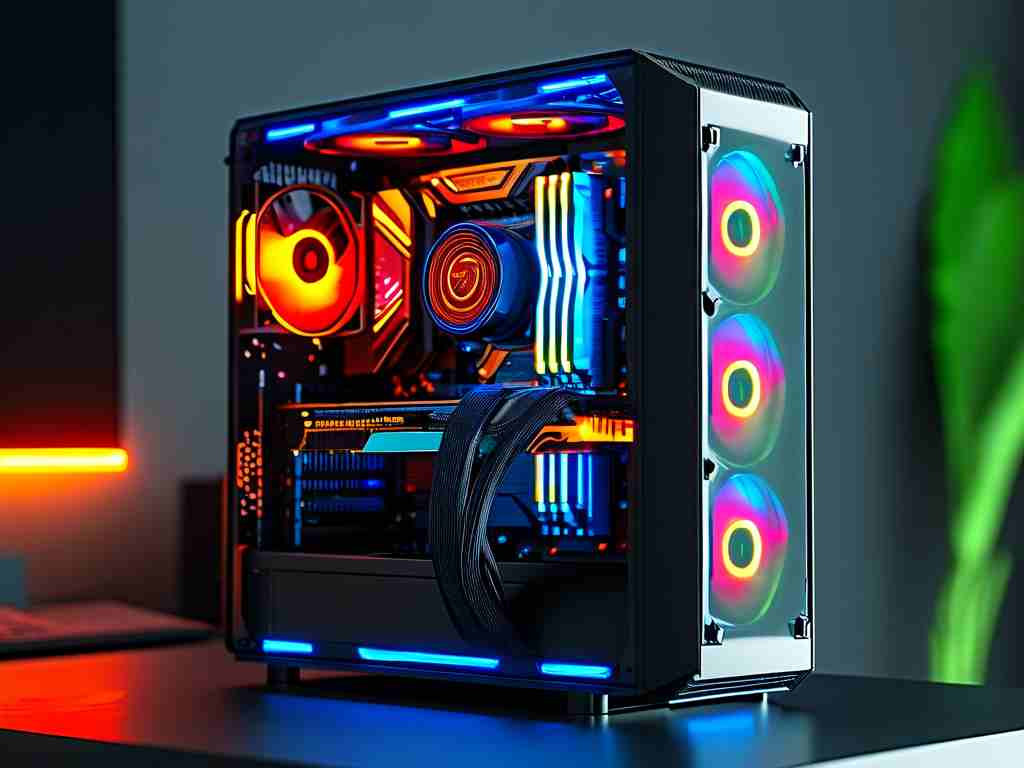As computer customization becomes increasingly popular, memory module RGB lighting has evolved from niche enthusiast feature to mainstream PC aesthetic requirement. Specialized memory lighting management software now plays a crucial role in balancing system performance with visual appeal, offering users unprecedented control over their hardware's luminous displays.

Modern RGB memory modules integrate multiple LED zones capable of displaying 16.8 million colors. Unlike early single-color implementations, current solutions like Corsair's iCUE, G.Skill's Trident Z RGB Controller, and open-source alternatives such as OpenRGB enable granular control through intuitive interfaces. These programs communicate directly with memory SPD chips through SMBus protocols, allowing real-time adjustments without requiring physical modifications.
Three core functionalities define effective lighting management software: hardware synchronization, pattern customization, and system integration. Advanced solutions synchronize RAM lighting with other components (GPUs, cooling systems) through standardized protocols like ASUS Aura Sync or MSI Mystic Light. Pattern customization extends beyond static colors to include dynamic effects – from reactive audio visualizers that pulse with music beats to temperature-responsive gradients that shift from blue to red based on DIMM thermal readings.
Technical considerations for optimal software performance include memory type compatibility and resource allocation. DDR4 modules typically utilize 5V addressable RGB headers, while newer DDR5 designs incorporate improved power delivery for brighter displays. Developers must balance lighting resolution (measured in LEDs per inch) with software overhead, as excessive resource consumption could impact system performance during intensive tasks.
Security remains a critical concern in lighting management tools. Reputable manufacturers implement encrypted firmware validation to prevent unauthorized access through the SMBus interface. Users should avoid third-party software lacking digital signatures, as demonstrated by the 2023 vulnerability disclosure in unverified RGB utilities that exposed memory timing controls to potential exploits.
Practical implementation scenarios reveal diverse user requirements. Gaming setups often prioritize reactive lighting that syncs with in-game events – for instance, flashing red when player health drops in RPGs. Content creators might configure subtle ambient lighting that correlates with rendering progress in video editing software. Corporate environments occasionally employ monochromatic lighting schemes to maintain professional aesthetics while benefiting from hardware status indicators.
Troubleshooting common lighting issues requires understanding software-hardware interactions. Frequent problems include LED desynchronization (resolved through controller firmware updates) and color inaccuracies (calibrated via hexadecimal code input). Advanced users can access developer modes in some software packages to create custom lighting scripts using Lua or Python, though this requires understanding of memory addressing and timing parameters.
Emerging trends point toward AI-enhanced lighting automation. Prototype systems now analyze application usage patterns to auto-adjust lighting profiles – dimming during spreadsheet work while activating vibrant patterns when launching games. Environmental integration is expanding through smart home APIs, enabling scenarios where memory lighting changes based on room lighting conditions detected via IoT sensors.
For first-time users, installation best practices include:
- Verifying motherboard compatibility through manufacturer documentation
- Creating system restore points before software installation
- Testing default profiles before attempting custom configurations
Industry analysts predict increased standardization as the market matures, with JEDEC reportedly considering RGB control specifications for future DDR6 standards. Meanwhile, energy efficiency improvements continue – modern addressable LEDs consume 40% less power than first-generation RGB modules while delivering brighter outputs.
Ultimately, memory lighting management software represents the intersection of technical precision and creative expression in modern computing. As these tools evolve, they're redefining how users interact with and personalize their systems, transforming functional components into dynamic canvas elements that reflect individual style and system status through intelligent illumination.

